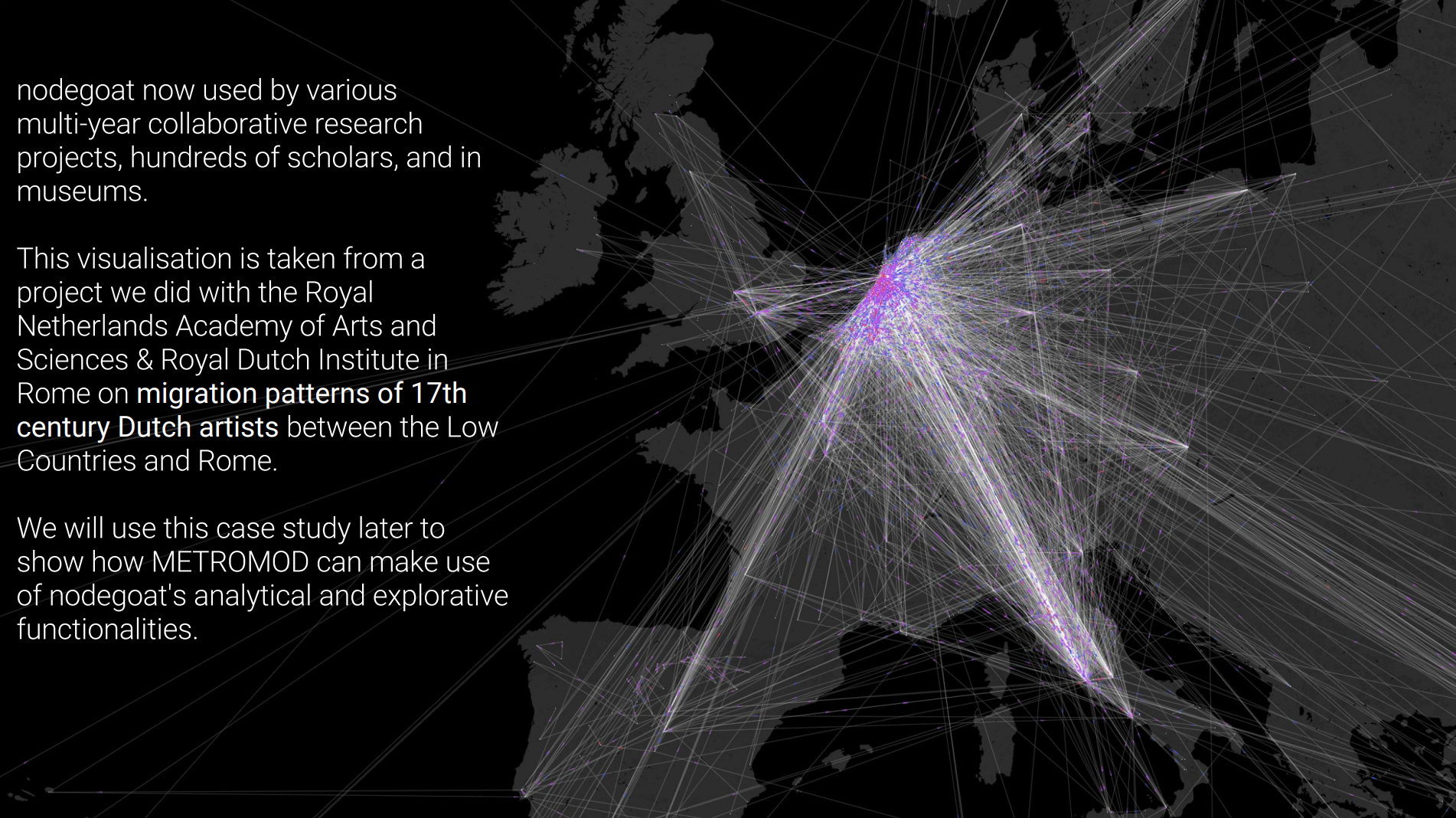DataVis Workshop
An exploration of digital humanities tools

METROMOD convened an expert workshop at the Institute of Art History, LMU Munich to discuss potential approaches to our work package on Digital Mapping. We invited Pim van Bree and Gert Kessels of Lab1100 (Netherlands), Karol Piekarski of MapLab, MediaLab Katowice (Poland) and Maximilian Schich, an expert in art historical data visualization from the University of Texas, Dallas (USA) to present their experiences, approaches and ideas in the form of 20-minute inputs.
Pim van Bree and Gert Kessels presented their software “Nodegoat” software, which processes, analyses and visualises complex datasets. It has become a benchmark in academic network research. As a collaborative, flexible, custom-design tool for inputting and storing data as well as visualising connections, Nodegoat seems to be a very viable tool for METROMOD.
Karol Piekarski presented mapping projects related to the city of Katowice that emphasised the significance of visualisation in communicating and curating data. Based on large datasets, the deceptively simple visualisations narrated very selective stories, illuminating only specific aspects of the data collected.
Maximilian Schich presented a 4-year research project A network framework of cultural history published in Science and Nature that used network analytical visualisations to explore the cultural significance of the places of birth and death of ‘notable people’ in relation to human mobility. He emphasised the potential of using existing contemporary datasets to test and compare with the historical datasets METROMOD will create.
The presentations were followed by an animated 2-hour brainstorming session during which we discussed how to proceed with building a digital data visualization and research tool for METROMOD. The workshop made clear that there is no single product or solution available for METROMOD’s needs and that we will have to assemble and cooperate with a variety of actors and tools, which, we hope, will enrich the project.

